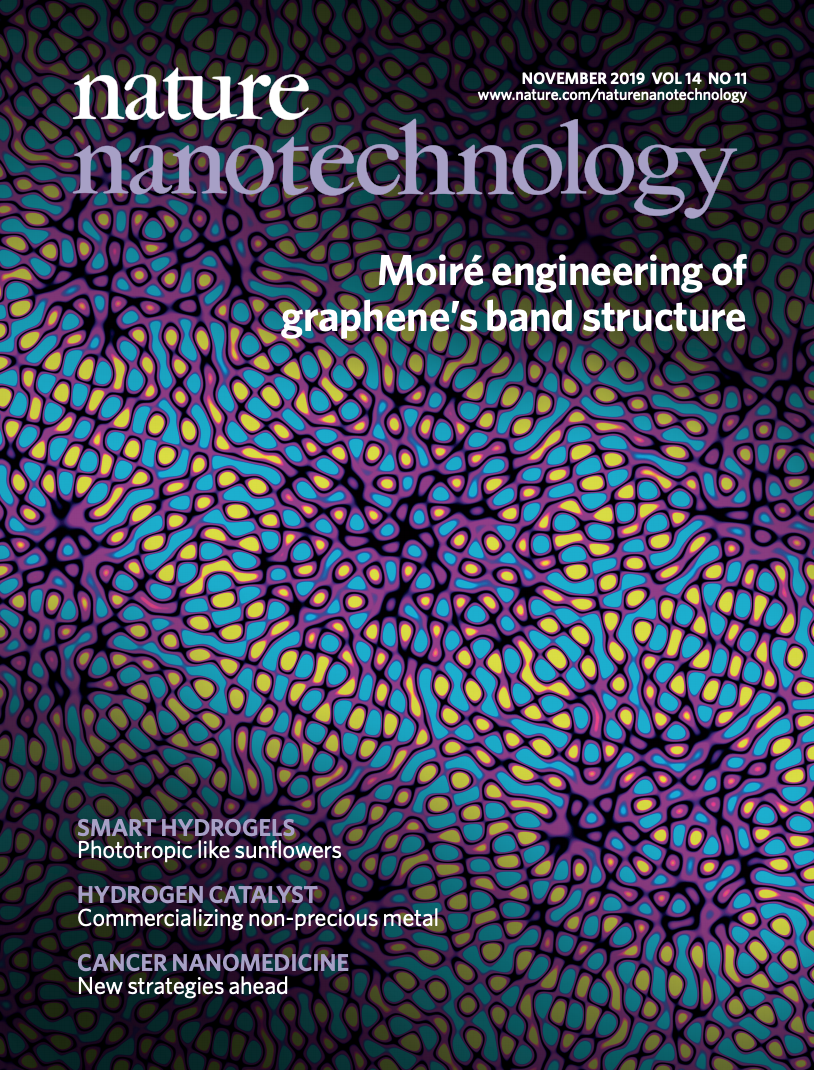Twisted-Layer Research From Alumnus on Journal Cover

A Department of Energy National Nuclear Security Administration Stewardship Science Graduate Fellowship (DOE NNSA SSGF) alumnus provided the cover image for the November issue of the journal Nature Nanotechnology and is co-lead author of a paper related to it.
In the paper, published in the same issue, former fellow Nathan Finney and colleagues report on a technique to tune the electronic properties of single-atom-thick materials by altering how they’re oriented to each other. Finney conducted the research as part of his doctoral studies in micro/nanoscale engineering at Columbia University.
The team, including Finney’s faculty advisor, James Hone, built devices consisting of three layers of two-dimensional materials – sheets just a single atom thick.
The researchers sandwiched graphene, a semimetal comprised solely of uniform carbon atoms linked in a lattice, between uniform layers of boron nitride, an insulator. Twisting the angle between the layers so the honeycomb-like lattices are out of alignment creates moiré patterns, nanoscale interference configurations that also look like honeycombs, a Columbia release notes. The resulting moiré superlattices change graphene’s electronic properties, such as how well it conducts electricity. That may give scientists a way to control and adjust the material’s performance in nanoelectronic devices and other applications.

Most moiré superlattice research has looked only at a single interface of graphene with a boron nitride layer above or below it. The new paper examines both the top and bottom surfaces of graphene in a single device, Finney says in the release. By designing 2-D materials that remain aligned at one interface and are tunable by twisting the alignment at the other, the team has studied the effects of multiple moiré superlattice electronic potentials on the graphene layer.
“We had a hunch that by doing so, we would be able to potentially double the strength of the moiré superlattice using the coexisting moiré superlattices from the top and bottom interfaces,” Finney says.
The team discovered that twisting the angle of the layers let them control both the strength of and overall symmetry as inferred from significant changes observed in the graphene’s electronic properties.
“This is the first time anyone has seen the full rotational dependence of coexisting moiré superlattices in one device,” Finney says. “This degree of control over the symmetry and the strength of moiré superlattices can be universally applied to the full inventory” of 2-D materials. “This technology enables the development of nanoelectromechanical sensors with applications in astronomy, medicine, search and rescue, and more.”


